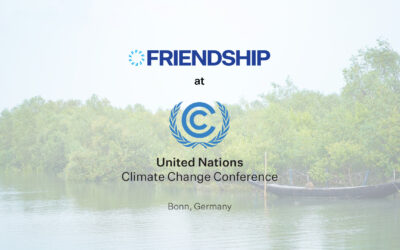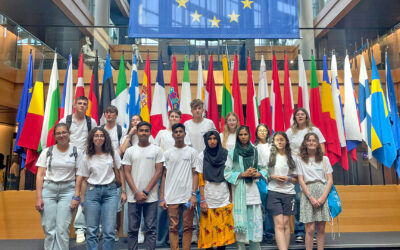
by Kazi Amdadul Hoque
January 14, 2024
The active engagement of approximately 85,000 individuals from nearly 200 countries at the 28th United Nations Climate Change Conference (COP28) in Dubai last month serves as a testament to the collective determination to design sustainable climate solutions and establish partnerships to invest in the development of climate-resilient communities. While COP outcomes are often gradual, these multilateral processes play a crucial role in taking steady steps towards the right direction. The latest summit, however, was rife with faulty agreements, postponed resolutions on challenging issues, and committed funding that fell short of the necessary amount required to address the ongoing global warming crisis.
At COP27, members had agreed to a Loss and Damage Fund to help the poorer and low-emitting countries who need to deal with the impacts of climate change. The breakthrough topic also tentatively touched upon who should contribute to this fund, albeit vaguely. Potent questions such as where it would sit, who would have power over it, and who would have access to the funding (and who wouldn’t) were also left unanswered.
A transitional committee, however, was created with 14 developing and 10 developed countries, who met regularly in 2023 but found no particular resolution. The final meeting was a hastily arranged affair right before the latest edition of the climate summit, with the two chairs from South Africa and Finland presenting the developing countries with a sloppy offer: to take the funding from the World Bank for an interim period.
Meanwhile, More than $792 million was pledged in this year’s convention for loss and damage. While it is heartening to see several countries coming forward to fund the progress of such a reserve, the amount as a whole is inadequate, to say the least. Cyclone Idai in Mozambique, for instance, caused losses of close to $2 billion. Collectively, such disasters cost billions of dollars per year. Based on historical data, natural hazard events in Bangladesh cost more than $10 billion in just economic losses between 2000 and 2013.
Additionally, a key agenda for the COP28 agreement was to call for solid planning and implementation of adaptation efforts by 2030. The convention also wanted to see increased adaptation financing—oddly, however, without mentioning any specific goals on adaptation finance.
A sliver of success was seen with the accomplishment of the first Global Stocktake at the climate change conference, despite geopolitical challenges. A crucial mechanism for achieving the goals of the Paris Agreement, the Global Stocktake was an opportunity to hold large emitters accountable for climate action. A look at the stocktake reveals that countries still have a long way to go to reach the Paris Agreement goal of containing the global average temperature to 1.5 degrees Celsius above the pre-industrial levels. To achieve that, greenhouse gas emissions would need to go down by a whopping 43 percent by 2030.
Experts argue that more potent Nationally Determined Contributions (NDCs) are required for high-emitting countries and there is a strong need for them to update their long-term strategies. Their policies and instruments must align with the same goal of keeping the world temperature at a minimum, and their policies should foster competition in green technology markets to speed up the transition from fossil fuels. One hundred and thirty-two countries agreed to triple global renewable energy capacity by 2030.
But, almost as an insult to injury, the implied domination of the developed world has continued through the abysmally weak language used throughout the convention. Rather than calling the loss and damage funds “compensation,” for instance, which is all it was ever really meant to be, the term used is loosely based on the concept of “solidarity,” indicating that the developed nations would never come down their pedestals to acknowledge the error in their ways.
In addition to loss and damage, another major aspect of the last COP that disappointed many was its take on fossil fuels. After using strong terms such as the “phasing out” of fossil fuels in previous conventions, the last few years have seen the terminology grow weaker and weaker, right down to this year’s “phasing down” and “transitioning away.” That the language in the agreement to transition away from fossil fuels lacks specificity and a definite timeline, is being attributed to the fact that a major oil-exporting country held the presidency for this climate summit.
Achieving the 13 percent annual average growth necessary to triple renewable energy capacity by 2030 poses a formidable challenge, as it is twice the growth rate achieved over the past five years. To reduce global energy consumption and emissions by a third, efficiency improvements above four percent annually are crucial in the coming decade. However, attaining this requires more than tripling the rate of efficiency gains observed in the last five years. The decision to triple nuclear energy capacity by 2050 may have been met with enthusiasm from the nuclear industry, but came as a rude shock to many environmentalists.
As a silver lining, COP28 did yield some significant results. Although not all agenda items reached fruition, noteworthy progress was achieved in areas such as climate justice, energy transition, agricultural resilience, food security, and various other sectors closely linked to the 1.5-degree-Celsius target outlined in the Paris Agreement. The statement on loss and damage and contributions needs to be published by all countries from 2024 onwards. The governance of the Loss and Damage Fund needs to be managed by a government-civil society collaboration.
Note: This op-ed was originally published in The Daily Star on January 3, 2023.



